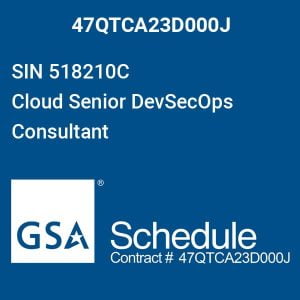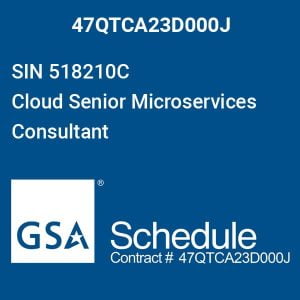In this blog post, we are going to discuss best practices for multi-cloud integration in detail. Let’s begin by answering the question of what is multi-cloud!
What is Multi-Cloud Integration Best Practices?
As the name suggested, multi-cloud is a cloud computing approach that consists of two or more cloud computing services of different vendors in a single network architecture. Multi-cloud consists of two or more public clouds, but it can contain private clouds as well. Some of the famous public cloud providers are Amazon Web Services (AWS), Google Cloud, IBM Cloud, Microsoft Azure, and Oracle. One main objective of multi-cloud is to avoid being dependent on a single cloud service provider.
What are the Best Practices of Multi-cloud Integration?
In this digital world, more and more organizations tend to deploy multi-cloud environments to gain the benefits of multi-cloud strategy to their businesses. However, many companies have struggled with multi-cloud strategy as they were unable to follow the best practices. Therefore, following the best practices makes the multi-cloud integration process easy, and leads to the long-term success of the business.
Let’s discuss some of the best practices your organization can follow for successful multi-cloud integration.
Avoid the risk of vendor lock-in
One way of avoiding the risk of vendor lock-in is to shift from a single cloud service provider to multiple cloud service providers. Usually, sticking with one cloud service provider makes it difficult and costly to change the cloud service provider in the future as data is difficult to use by another cloud service provider. Therefore, it is crucial to use multiple cloud service providers for your business. Also, understanding the services provided by the vendors and the use of containers helps to avoid vendor lock-in.
Selecting the best cloud service provider
It is critical to select the best cloud service provider that matches your business and technical needs, such as business goals, budget, tools, etc. Most of the multi-cloud service providers offer a wide range of cloud services for very competitive pricing plans. Hence, it can be very challenging to select the most suitable option for your business, and it may also lead the user to suffer from the paradox of choice as there are too many options to select.
So you need to have a better understanding of cloud computing strategy and the services offered by different cloud service providers before you select the cloud service provider.
Use containers and follow microservices architecture
Deploying containers help to develop the application and running the application conveniently from one environment to another environment. It also increases the portability of workloads. Further, the portability of workloads helps to avoid the risk of vendor lock-in as well.
The microservices architecture breaks down the application into small chunks that can be reused by other applications. It is a cost-effective approach and also speeds up the application development process due to the reusability of components.
-
 GSA SIN 54151HACS Principal Security Architect$153.15 / Per Hour
GSA SIN 54151HACS Principal Security Architect$153.15 / Per Hour -
 GSA SIN 518210C Cloud Senior DevSecOps Consultant$143.62 / Per Hour
GSA SIN 518210C Cloud Senior DevSecOps Consultant$143.62 / Per Hour -
 GSA SIN 518210C Cloud Senior Microservices Consultant$129.41 / Per Hour
GSA SIN 518210C Cloud Senior Microservices Consultant$129.41 / Per Hour
Ensure high performance
It is not a good practice to store large volumes of data in one cloud, even though it is cost-effective. Storing large volumes of data in one cloud will cause performance issues. Avoiding such practices is one way of ensuring high performance with multi-cloud integration best practices.
Use of cloud monitoring tools
Factors like availability and performance are difficult to monitor in an environment with multiple clouds. Therefore, the use of cloud monitoring tools helps to monitor the availability and performance more conveniently and accurately.
Optimize costs
Muti-clouds solutions cost more than single cloud solutions as multiple cloud service providers involved in multi-clouds. Use of cost optimization tools, use the service of a cloud service broker, building an in-house team, follow microservices architecture and negotiation with cloud service providers help to reduce the cost in significant amounts.
Unlock the future of intelligent applications with our cutting-edge Generative AI integration services!
Increase the security level of data
Some cloud service providers take care of security within the cloud. However, it is crucial that end-users also take the necessary actions to ensure that data is safe. Encryption of data in motion is one way of ensuring the security of data.
Running a private cloud is not always essential to safe data in the cloud. However, there are some situations where public clouds may not meet all your security requirements. In those situations, the organization needs to run a private cloud to ensure the security of data.
Compliance with Multi-Cloud Integration Best Practices
Organizations need to ensure its compliance with industry standards such as the General Data Protection Regulation (GDPR) of the European Union (EU). Further, the organization needs to be familiar with any other regulations that are relevant to their business. Otherwise, your company may have to pay a high amount of fines.
Build an In-house team of multi-cloud computing professionals
Multi-cloud computing is one of the fast-growing sub-fields in the IT (Information Technology) industry. Hence, hiring multi-cloud computing experts can be very challenging and very expensive as they have a very high demand. Therefore, building an in-house team will be beneficial for the organization in many ways, including the reduction of costs.
However, initially, your organization needs to hire some multi-cloud computing experts as their knowledge and experience are critical for successful multi-cloud integration. Further, the experts can be involved in training the existing staff and help to build an in-house team of multi-cloud computing professionals. If a company leveraged a large number of SaaS (Software as a Service), PaaS (Platform as a Service) and Iaas (Infrastructure as a Service) solutions, then the company requires a large number of in-house tech skills.
Final Thoughts for Multi-Cloud Integration Best Practices
We hope this blog post has helped you to understand the best practices for successful Multi-Cloud Integration Best Practices!

